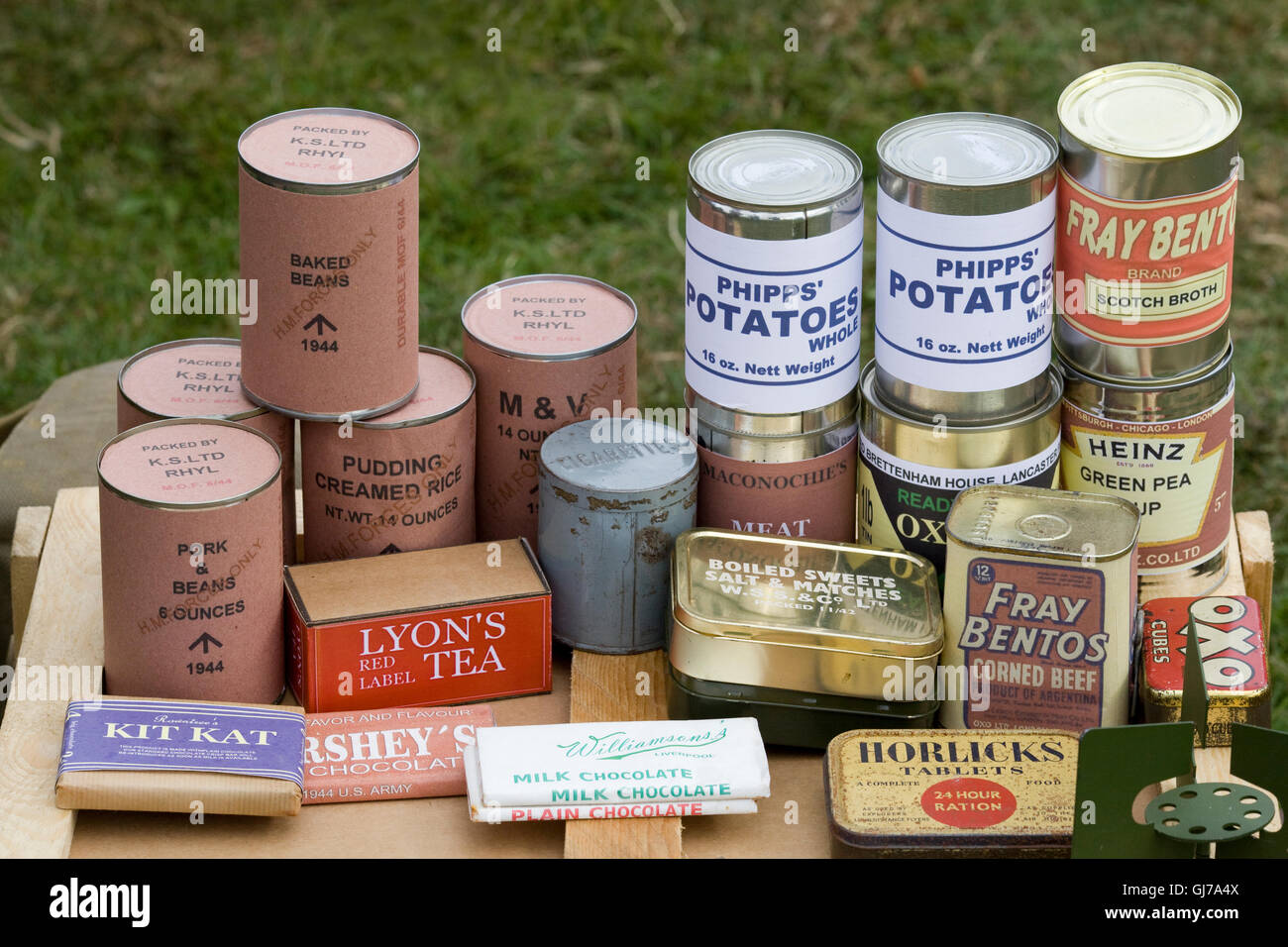
British Army Field Rations during World War II Stock Photo Alamy
Gives an excellent historical overview of Operational Ration development from the Revolutionary War to the end of World War II. Focuses on World War II development and fielding of the C, D, K, 5 in 1 and 10 in 1 rations. From Chapter 1 of "Special Rations for the Armed Forces, 1946-53", By Franz A.
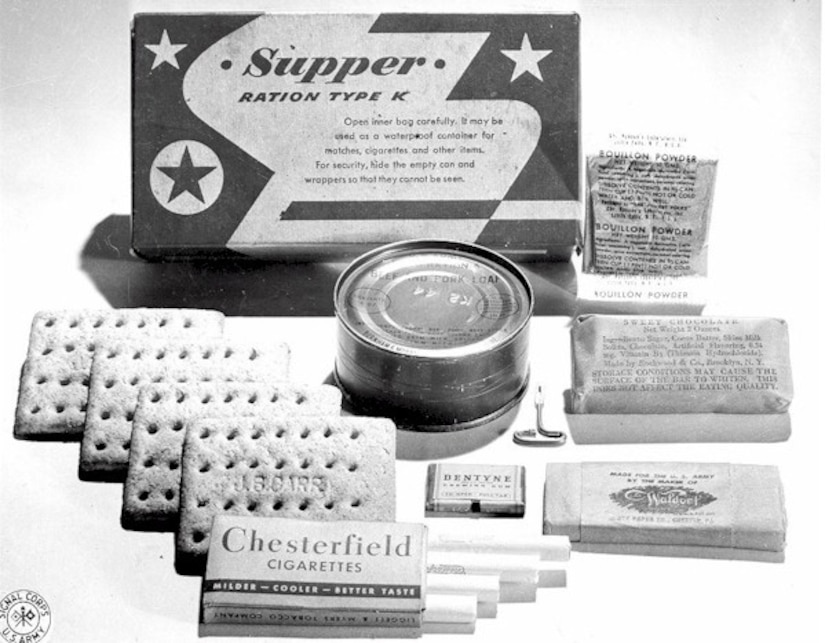
'CRats' Fueled Troops During and After World War II > U.S. DEPARTMENT OF DEFENSE > Story
A selection of United States military C-ration cans from the World War II era (the vanilla caramels and Old Gold cigarettes were not part of the ration) view image A United States Airman's Meal, Combat, Individual ration (also called a C-ration). DaNang, Vietnam, circa 1966 - 1967. view image

'CRats' Fueled Troops During and After World War II > U.S. Department of Defense > Story
Howard R. Hollem/Getty Images. On the home front during World War II, everyday life across the United States was dramatically altered. Food, gas and clothing were rationed. Communities conducted.
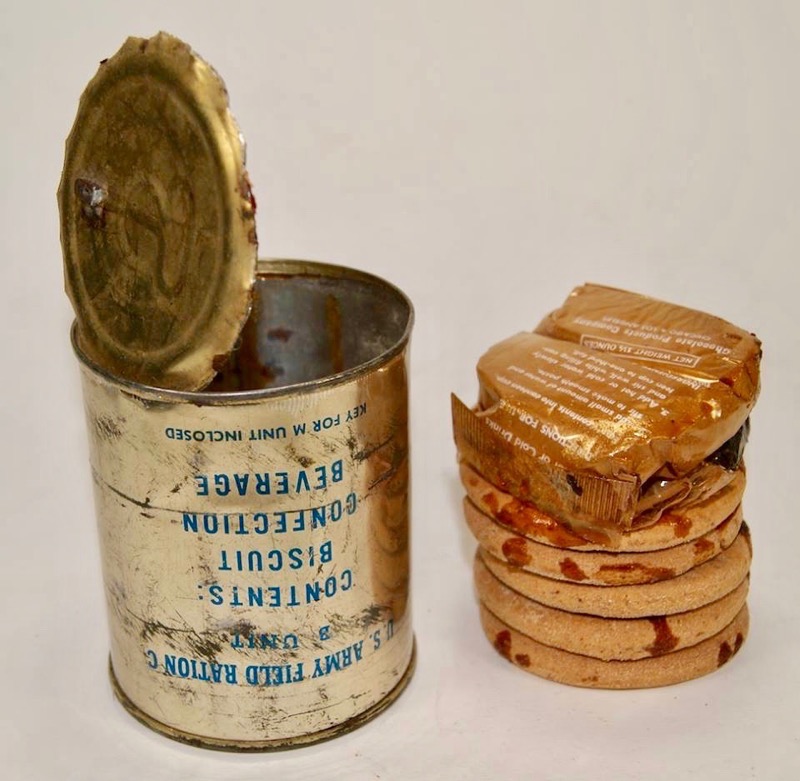
C RATION K RATION KRATION
C-rations were widely used after an initial testing period during World War II. Although the MCI, or Meal Combat Individual, replaced C-rations in 1958, most U.S. troops continued to call them C-rations. This continued until about 1980 when the MRE, or Meal, Ready-to-Eat, replaced the MCI.

Pin on WWII US Rations
K-Rations were a boxed meal for U.S soldiers from WWII - Vietnam. C-Rations were canned goods that were classified in two parts: The B Unit and the M Unit. The B Unit was the biscuit unit, and the M Unit was the meat unit. A C-Ration would usually contain six biscuits, coffee, lemon juice powder or cocoa powder, and sugar.
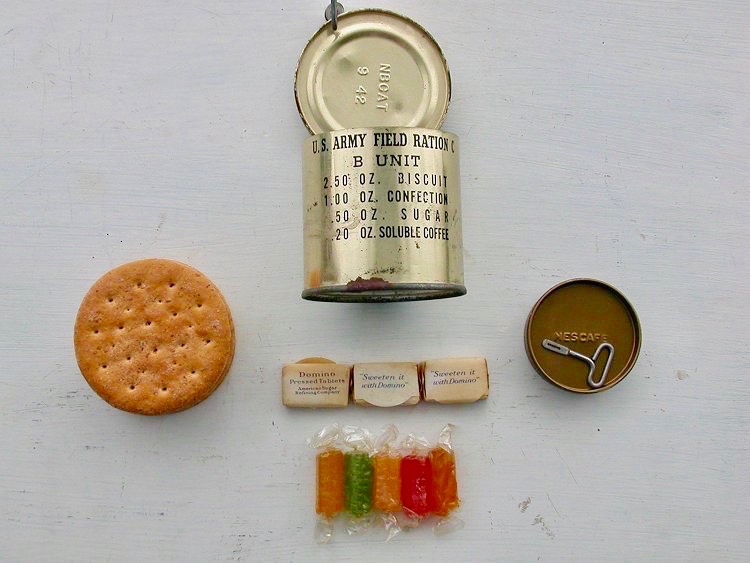
C RATION K RATION KRATION
Packaging of K-rations used during World War II and the Korean War on display at Fort Devens The K-ration was a United States military ration consisting of three separately boxed meal units: breakfast, dinner, and supper. [1]

Pin on Steve1989 MREinfo
The C-Ration was first field tested in 1940, and was used by land forces throughout World War II and the Korean War. In 1958, the C-Ration was replaced by the "Meal, Combat, Individual", or MCI Ration. However, the MCI Ration was so similar, that troops continued to call the new rations "C-Rations," or "Charlie Rats" for short.
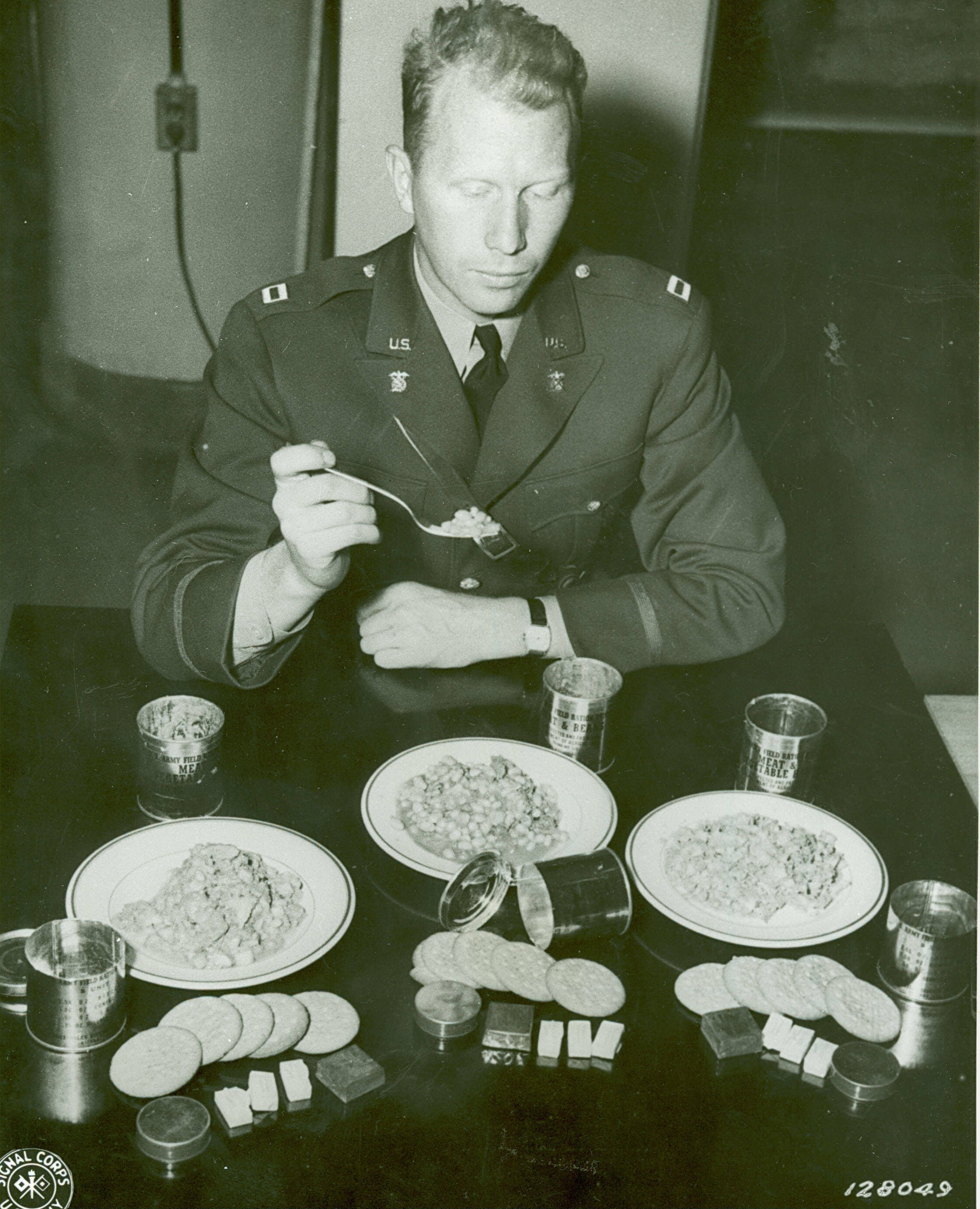
Food Rationing on the World War II Home Front (U.S. National Park Service)
Field Ration D or emergency ration was an ersatz chocolate bar designed to give soldiers enough energy "to last a day.". Proposed in 1932 for the cavalry, developed in 1935, and first produced in large numbers in 1941, the D Ration was not your everyday Hershey bar. Comprising bitter chocolate, sugar, oat flour, cacao fat, skim milk powder.

British WWI C rations in a wooden box. Military food, Wwii lessons, Wwii decor
Rationing In The Second World War. In January 1940, the British government introduced food rationing. The scheme was designed to ensure fair shares for all at a time of national shortage. The Ministry of Food was responsible for overseeing rationing. Every man, woman and child was given a ration book with coupons.

My new WWII historical combat rations CGTrader
Try the eBay way-getting what you want doesn't have to be a splurge. Browse Ww2 c rations! No matter what you love, you'll find it here. Search Ww2 c rations and more.

Closer view of the US Militaryissue C Ration box with contents labeled on the outside. These
A selection of United States military C-ration cans from World War II with items displayed. Note that the Old Gold cigarettes and vanilla caramels were not part of the C-ration. The C-ration (officially Field Ration, Type C) was a United States military ration consisting of prepared, canned wet foods.

Remember CRations? RallyPoint
rations from this era was the "Ration, Combat Individual" or "C-Rat" which was composed of M units (meat and vegetables) and B units (bread, sugar, and coffee). Troops ate C-Rations for up to 90 days and generally disliked them due to menu monotony and their lack of balanced nutrition. Another ration from World War II was the K-Ration.

Reproduction WWII US Army C Ration cans Stock Photo Alamy
C-Rations were developed in 1938 as a replacement for reserve rations, which sustained troops during World War I, and consisted chiefly of canned corned beef or bacon and cans of hardtack biscuits, as well as ground coffee, sugar, salt and tobacco with rolling paper — not much in the way of variety.

WW2 C Ration Crate (Later version) Frontline Crate Co.
World War II: The G.I. G.I. Bill. For U.S. Troops, there were two major types of rations during World War II: the C-Ration (for combat troops) and the K-Ration (less bulky and initially developed.
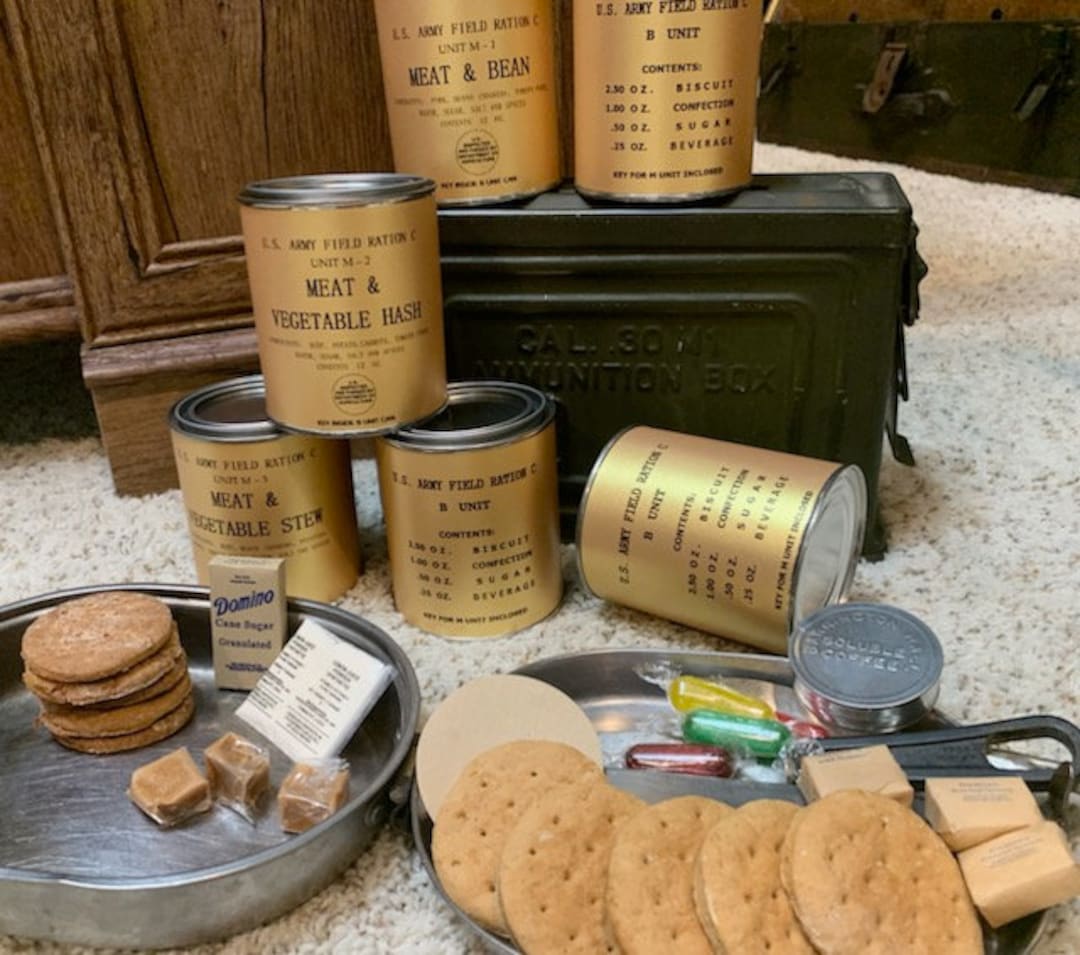
WWII US Army C Ration Reproduction Fully Edible Exact Etsy
World War II put a heavy burden on US supplies of basic materials like food, shoes, metal, paper, and rubber. The Army and Navy were growing, as was the nation's effort to aid its allies overseas. Civilians still needed these materials for consumer goods as well. To meet this surging demand, the federal government took steps to conserve crucial supplies, including establishing a rationing.
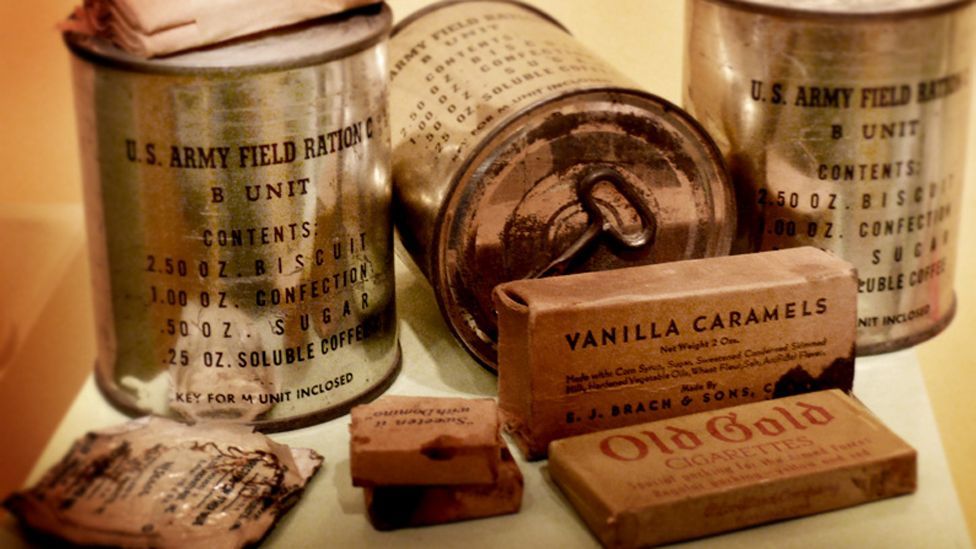
Military rations How to cook up better battle food BBC Future
The post-war canned ration, evolved out of the ww2 C Ration, is the "Ration, Combat, Individual", but are commonly called C ration as well. The C Ration in 12-ounce cylindrical cans exhibited here as three meals. From left to right: Meat & Vegetable Hash, Meat & Vegetable Stew and Meat & Beans. All the B-units are identical.